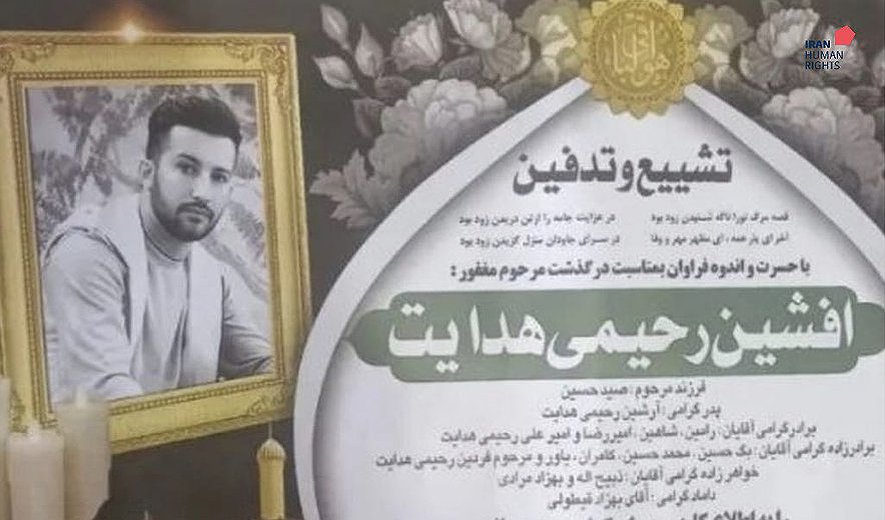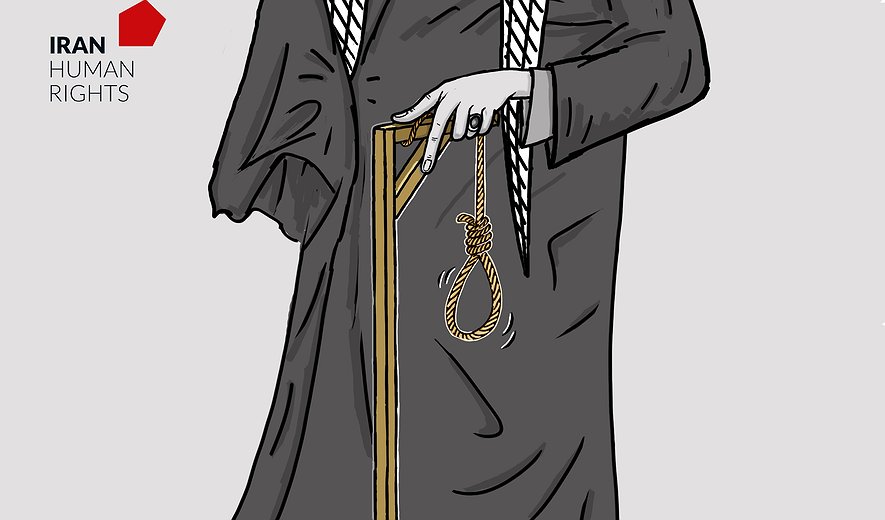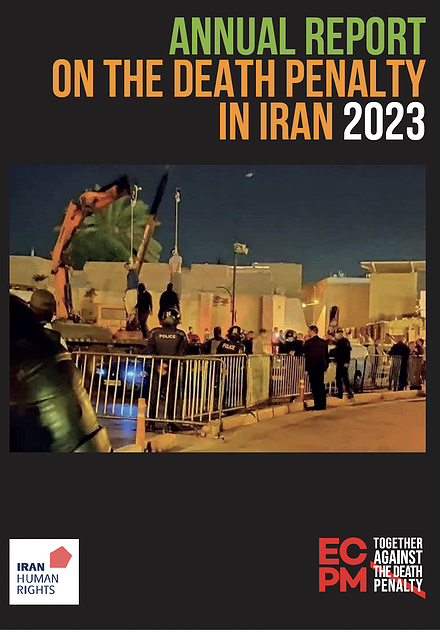Roghieh Abedini and Afshin Rahim Hedayat Executed in Hamedan

Iran Human Rights (IHRNGO); August 12, 2023: A woman named Roghieh Abedini who was sentenced to qisas (retribution-in-kind) and a man named Afshin Rahim Hedayat who was sentenced to death for drug-related charges, were executed in Hamedan Central Prison.
According to information obtained by Iran Human Rights, at least one man and a woman were executed in Hamedan Central Prison on 10 August. Their identities have been established as 30-year-old Afshin Rahim Hedayat (pictured) from Kangavar ho was sentenced to death for drug-related charges and Roghieh Abedini who was around 40 and sentenced to qisas for murder.
An informed source told Iran Human Rights: “Roghieh Abedini was from Tabriz and had been sentenced to death for the murder of her husband in Hamedan. She was arrested three year ago.”
A day prior, two Kurdish men were executed in Hamedan Central Prison. Informed sources have told Iran Human Rights that three other prisoners were executed for drug-related charges at the prison that day. However, Iran Human Rights has been unable to independently verify the executions.
At the time of writing, none of their executions have been reported by domestic media or officials in Iran.
Drug-related executions have continuously risen every year for the past three years. At least 206 people were executed for drug-related charges in the first six months of 2023, a 126% rise compared to the same period in 2022 when 91 were executed. 40 people were executed in the same period in 2021.
The number of drug executions dramatically dropped in 2018 following a 2017 Amendment to the Anti-Narcotics Laws. Consequently, drug executions ranged between 24-30 per annum between 2018-2020. The Amendment was reversed in practice in 2021 when executions increased ten-fold to 126 in 2021 and doubled again in 2022 with 256 drug-related executions
Those charged with the umbrella term of “intentional murder” are sentenced to qisas (retribution-in-kind) regardless of intent or circumstances due to a lack of grading in law. Once a defendant has been convicted, the victim’s family are required to choose between death as retribution, diya (blood money) or forgiveness.
Iran is the biggest executioner of women. In 2022, at least 16 women were executed. Roghieh is the 11th to be executed in 2023. Two other women were executed in Isfahan Central Prison on 9 July. According to Iran Human Rights’ report on Women and Death Penalty in Iran on the occasion of World Day Against the Death Penalty, at least 164 women were executed between 2010-October 2021. In 66% of the known murder cases, the women were convicted of killing their husband or partner. Within the marriage, a woman does not have the right to divorce, even in cases of domestic violence and abuse, which are hidden in cultural codes and language.
Since 2010, at least 199 women have been executed in Iran, with 11 executed in 2023.

